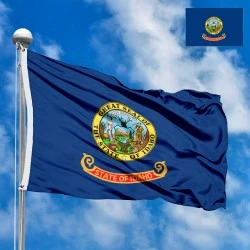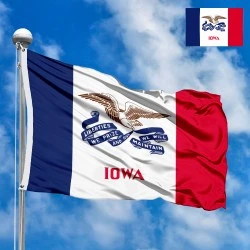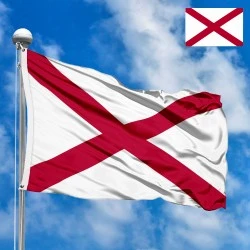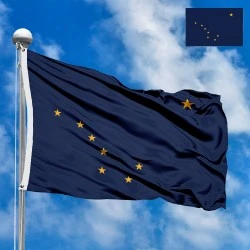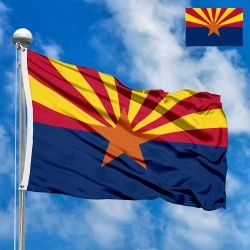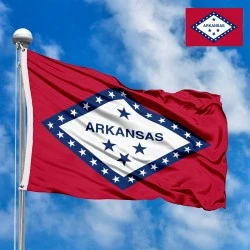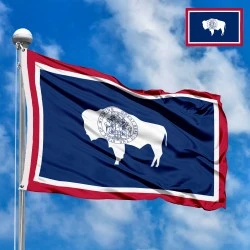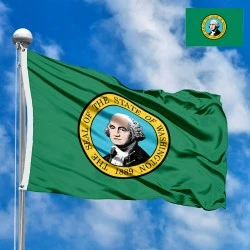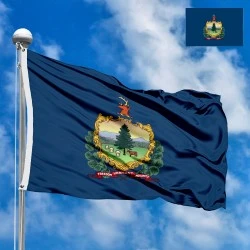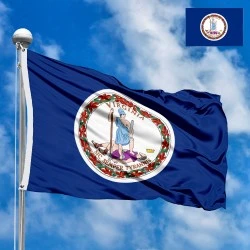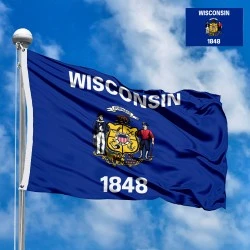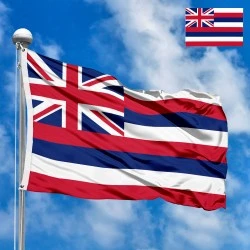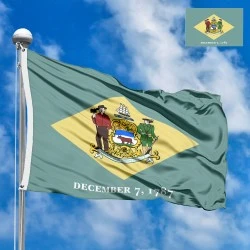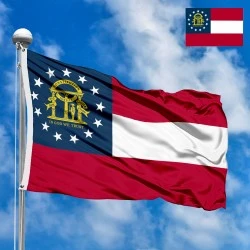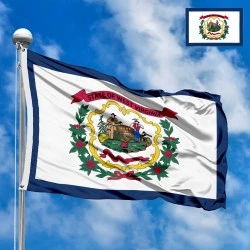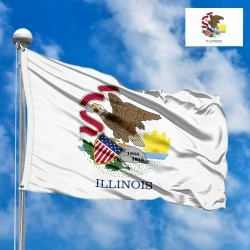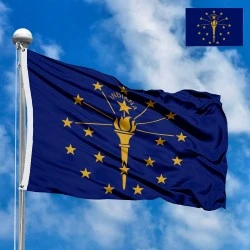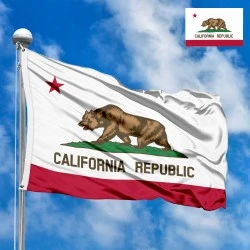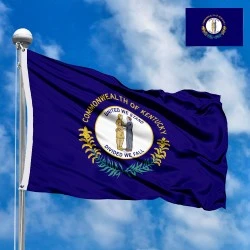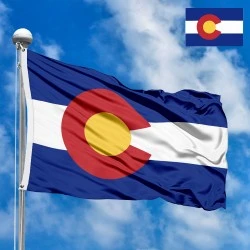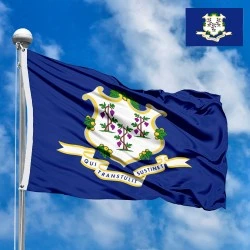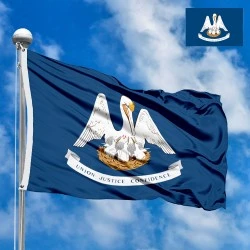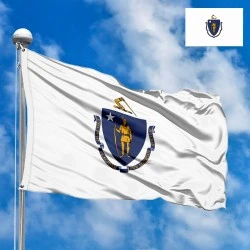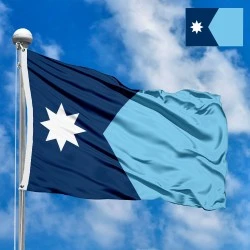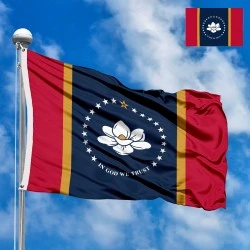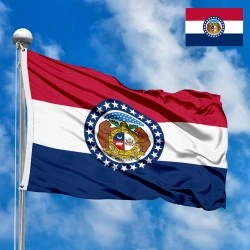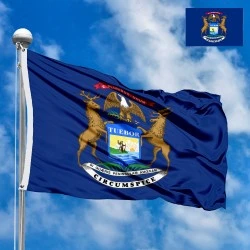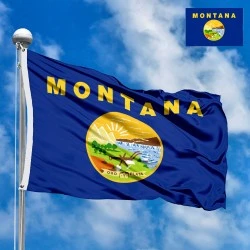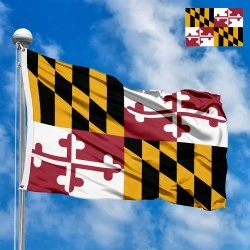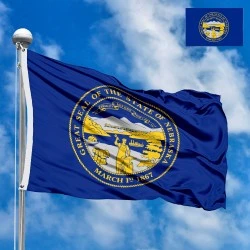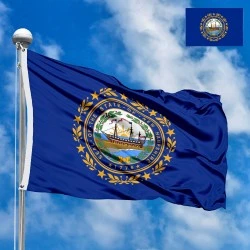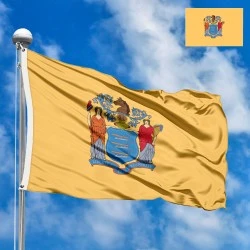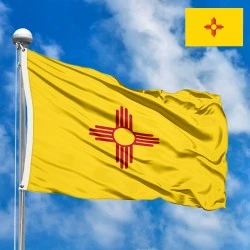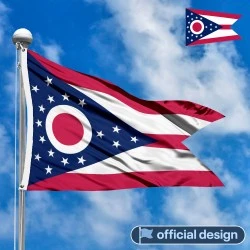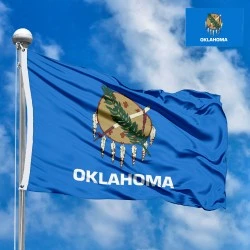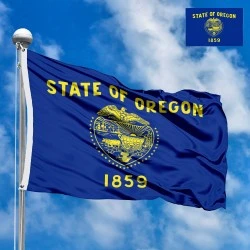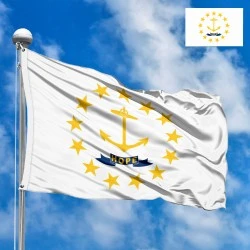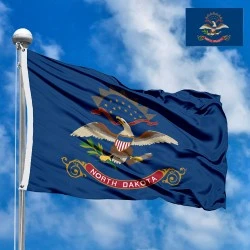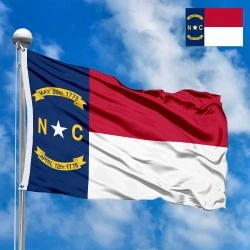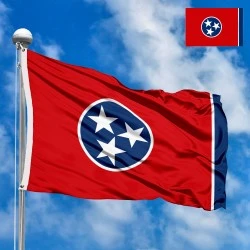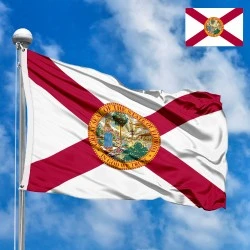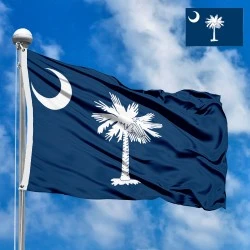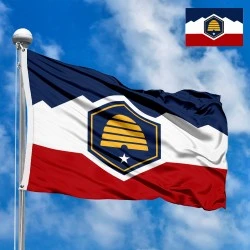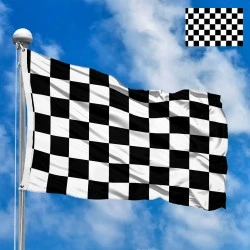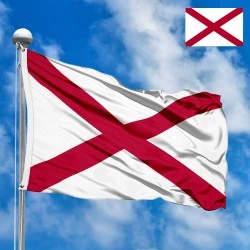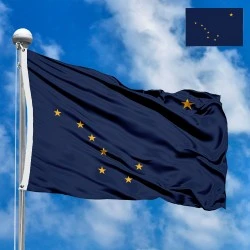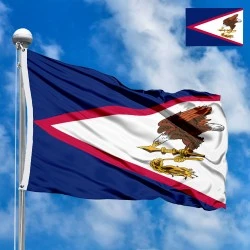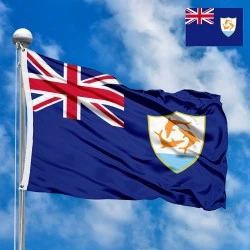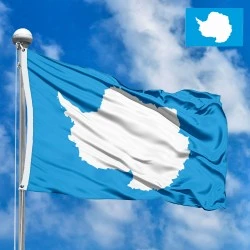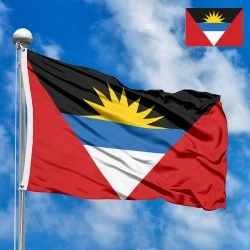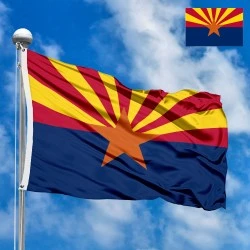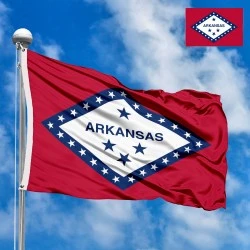Flag of Maine (US state)
- Flag Type: US States
- Proportions (official): 26:37
- Official name: State of Maine
- Local name: Maine
- Capital: Maine
- Large cities: Portland, Lewiston, Bangor
- Population: 1 364 547 (2024)
- Area (km²): 91 633
- Highest point: Mount Katahdin (1,606 m)
- Lowest point: Atlantic Ocean (0 m)
- Dialing code: +1 (207)
Flag Information
General information
Demography and Culture
Economy and communications
- All Flags
- Flags of Countries by Continent
-
Flags of Organizations
- Flags of UN countries
- Flags of the European Union countries
- Flags of NATO countries
- Flags of the countries of the Organization of Islamic Cooperation
- Flags of the countries of the Organization of American States
- Flags of the Arab League countries
- Flags of the African Union countries
- Flags of the countries of the Union of South American Nations
- Flags of the Commonwealth of Nations
- Flags of the countries of the Secretariat of the Pacific Community
- Flags of the Nordic Council countries
- Flags of the Caribbean Community
- Flags of the countries of the Association of Southeast Asian Nations
- Flags of the East African Community
- Flags of the countries of the Organization of Turkic States
- LGBT Community Flags
- Historical Flags
- Ethnic Flags
- Flags of the USA (states)
Description
The flag of the state of Maine is a visual compendium of the state's natural beauty, its foundational industries, and its guiding principles. While it follows the common "seal-on-a-blue-field" style of many state flags, every element of its detailed state seal tells a specific story about Maine's unique character and identity. The flag is a testament to the state’s rugged landscape, its rich maritime and agricultural heritage, and its motto that reflects both its geography and its people’s spirit of leadership.
Flag Design, Symbolism, and Dimensions
The Maine state flag is defined by its central emblem, the Great Seal of Maine, set against a solid-colored background.
-
Colors and Arrangement: The flag's field is a shade of federal blue, the same color as the canton of the U.S. flag, symbolizing Maine's loyalty to the Union. In the center of this blue field is the intricate and multi-colored state seal.
-
The State Seal: The seal is a microcosm of Maine's history and economy:
-
Central Shield: The heart of the seal is a shield featuring a solitary pine tree and a moose resting below it. The pine tree, a powerful symbol of Maine's vast forests and timber industry, gives the state its nickname, "The Pine Tree State." The moose represents the state's abundant wildlife and untamed wilderness.
-
Supporters: On either side of the shield stand two figures: a farmer on the left, holding a scythe, symbolizing agriculture and the importance of the land; and a sailor on the right, resting on an anchor, representing the state’s maritime heritage, fishing industry, and seafaring tradition.
-
Motto and Star: Above the shield is a blue ribbon with the state motto: "DIRIGO," a Latin word meaning "I direct" or "I lead." This motto is a nod to the North Star, which is positioned directly above the ribbon. The North Star symbolizes Maine's geographical position as the northernmost state in New England and its historical role as a guide for navigators.
-
Banners: Below the seal is a banner with the state name, "MAINE," and a wreath of pine and tassles.
-
-
Dimensions: The official dimensions of the flag are not strictly defined by law, but it is typically produced in a standard ratio of 3:5 or 2:3.
A Brief History of the Flag's Creation and Adoption
The current Maine flag is not the state’s first official banner. Its history is marked by a brief, but beloved, predecessor.
-
The 1901 Flag: Maine's first official flag, adopted in 1901, was a much simpler design. It featured a pine tree on a buff-colored field, with a blue star in the upper corner. This design was popular with many residents, but it was officially replaced just a few years later.
-
The 1909 Adoption: In 1909, the legislature replaced the 1901 flag with the current design, which places the state's seal on a blue field. This was a move to align Maine's flag with the common "seal-on-a-bedsheet" style of many other U.S. states.
-
Modern Debate: Today, there is a strong movement in Maine to bring back a simpler, more recognizable design, often inspired by the 1901 flag. Proponents argue that the current flag's seal is too complex to be easily identified or drawn, and that a simpler flag would be a better representation of the state's identity.
Historical Context and the State of Maine
Maine’s flag is a direct reflection of its historical role and economic identity. The symbolism of the seal harks back to the state's founding in 1820, when it separated from Massachusetts. The farmer and sailor represent the dual pillars of its economy, while the pine tree and moose are a tribute to the state's unique natural resources. The motto "Dirigo" and the North Star are a constant reminder of Maine's reputation for independence and self-reliance, and its location as the northeastern frontier of the United States.
Significance for Residents
For residents of Maine, the flag is a beloved symbol of their state’s enduring character. It speaks to a deep connection to the land and the sea, and a pride in a history of hard work and resilience. The flag represents not only the state's beautiful wilderness and rugged coastlines but also the values of its people: independence, self-sufficiency, and a guiding spirit. It is a symbol that resonates with a strong sense of place and a shared history.
Interesting Facts
-
The motto "Dirigo" is a powerful and concise statement of the state's character. It is a Latin term meaning "I direct" or "I lead," and it directly references the North Star on the flag.
-
The 1901 flag, with its simple pine tree and star, has experienced a resurgence in popularity and is often sold as an unofficial symbol of the state.
-
The current flag's seal, like many others of its kind, is often criticized by vexillologists (flag experts) for being overly detailed and difficult to recognize from a distance.
-
The state seal was originally designed by a committee appointed in 1820 to represent the new state's character and resources.
-
The moose on the seal is not in any specific pose, which leaves room for artistic interpretation in various depictions of the flag.
In the demonstration images, full-size flags are shown with proportions of 2:3, and hand-held flags with proportions of 1:2.
Donation
Download
Completely free for commercial and non-commercial use (public domain).
You can freely use them in your news magazines, websites, software, mobile applications.
We appreciate a backlink to https://flagssite.com
Raster files - Flag of Maine (US state) (PNG, JPG)
 Waving flag
Waving flag
- PNG format (transparent background), 72dpi, dimensions in Pixels (px), aspect ratio 3:4.
- 15х20 px
- 30х40 px
- 60х80 px
- 120x160 px
- 240x320 px
 Sizes:
Sizes:
"v15" - image size (by height); if necessary, replace with available: v15, v30, v60, v120, v240.
!!! For resizing, use the Latin (eng) keyboard layout.
<img src="https://flagssite.com/flags/v15/20572.png" alt="Flag of Maine (US state)">
 Round flag
Round flag
- PNG format (transparent background), 72dpi, dimensions in Pixels (px), aspect ratio 1:1.
"d15" - image size (diameter); if necessary, replace with available: d15, d30, d60, d120, d240.
!!! For resizing, use the Latin (eng) keyboard layout.
<img src="https://flagssite.com/flags/d15/20572.png" alt="Flag of Maine (US state)">
 Rectangular flag 2:3
Rectangular flag 2:3
- JPG format, 72dpi, dimensions in Pixels (px), aspect ratio 2:3.
"h30" - image size (by height); if necessary, replace with available: h15, h30, h60, h120, h240, h360, h480.
!!! For resizing, use the Latin (eng) keyboard layout.
<img src="https://flagssite.com/flags/h30/20572.jpg" alt="Flag of Maine (US state)">

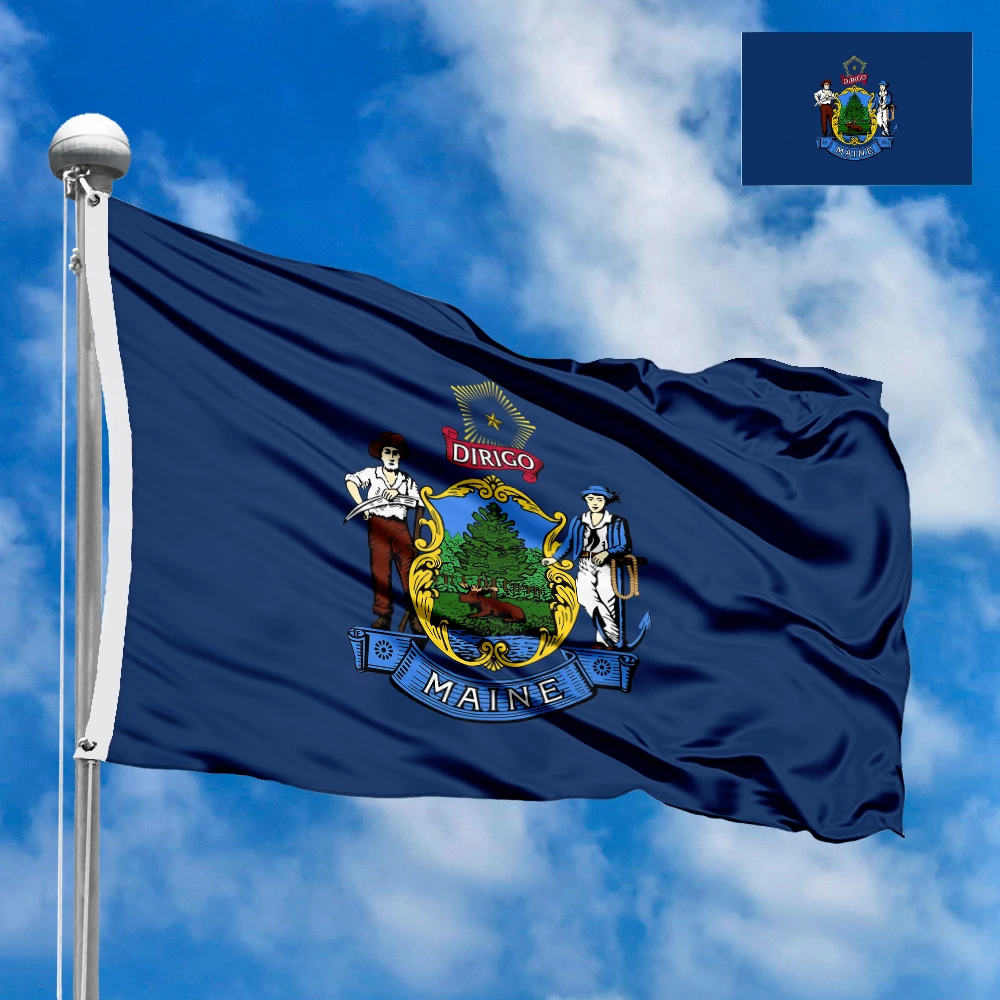
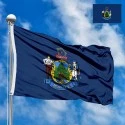



 Sizes:
Sizes:
 Sizes:
Sizes:
